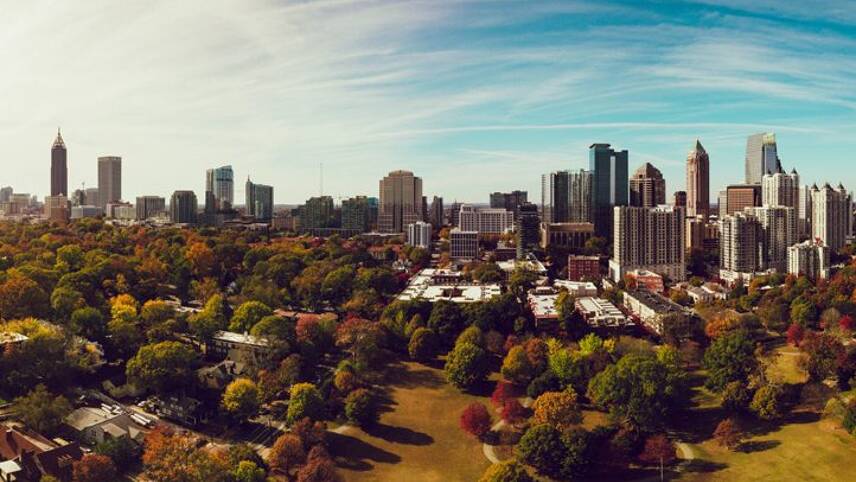Register for free and continue reading
Join our growing army of changemakers and get unlimited access to our premium content

In this time, anthropogenic CO2 emissions must drop by 45%. By 2050 they need to reach net zero, with any further emissions offset by deliberate removal of CO₂ already in the atmosphere. Investment firm Schroders has warned the global economy could suffer annual losses of $23trn in the long term without rapid action. This permanent economic damage would be almost four times greater than that of the 2008 global financial crisis.
The business world is already making great strides to reduce emissions and waste in a move towards a circular economy. But, if we are to achieve the UN’s targets, we need trees.
As chief executive of the Woodland Trust – the UK’s largest woodland conservation charity – the Committee on Climate Change’s recent call for a major increase in tree planting rates came as no surprise.
Up to 1.5 million hectares of new woodland is required by 2050 if our land is to become a more effective carbon store – that’s a total area greater than the size of Yorkshire.
These trees would form a natural emissions store, absorbing up to 18 million tonnes of carbon by 2050, creating a national landscape that is more resilient to the challenges caused by our warming world. Fail to plant these trees and we cannot hope to achieve the targets set out in the Paris Agreement while maintaining the critical services we receive from the land, be it water and wildlife or food and fuel.
Taking the lead on trees
With current government planting rates well short of what’s required, we cannot wait for Westminster to take the lead on tree planting. We are one of the least-wooded countries in Europe, with current woodland cover of just 13% compared to the EU average of 37%. By planting trees in the UK, organisations can make a direct contribution to fighting climate change on their doorstep.
Planting helps businesses work towards Goal 13: Climate Action of the UN’s Sustainable Development Goals (SDGs), but the benefits go far beyond carbon sequestration alone. Organisations that put trees in the ground can work towards achieving several other SDGS:
- Goal 2: Zero hunger – Agroforestry has the potential to make food production more productive, resilient and environmentally-friendly.
- Goal 3: Good health & wellbeing – More than one million visits are made to the UK’s woods and forests daily. Access to green spaces is proven to boost both mental and physical wellbeing.
- Goal 6: Clean water and sanitation – Trees clean our water, filtering out harmful substances and preventing soil erosion. They also reduce flood risk, a growing threat in a warming climate.
- Goal 11: Sustainable cities and communities – Urban trees reduce air pollution, provide homes for wildlife and boost our health and wellbeing. There is even evidence that they can help to reduce crime.
- Goal 15: Life on land – Trees and woods support a wealth of biodiversity. A single oak tree can support more than 350 other species.
Working together
Only through collaboration can we achieve our climate change targets. I’d like to offer the support of the Woodland Trust’s partnerships team to any organisation that wants to make a genuine impact here in the UK. It’s good for the planet and it’s good for business, resonating with employees, customers, shareholders and other stakeholders alike.
Please get in touch to discuss how we can help.
Beccy Speight is chief executive of the Woodland Trust
Beccy Speight at edie’s Sustainability Leaders Forum
The Woodland Trust’s chief executive Beccy Speight will be on Day 2 of edie’s Sustainability Leaders Forum (6 February 2019) to discuss the role of business leadership and what will change in the future.
Taking place 5 & 6 February 2019 at the Building Design Centre, London, the two-day event will also include discussions surrounding the best way to reduce your organisation’s supply chain emissions.
For more information and to register for the Forum, click here.




Not just trees but any green leafed plant. Think roof top gardens, think hanging gardens, think vertical gardens. Window boxes, hedges and anywhere that green leafed plants can be grown should be encouraged. Especially in towns and cities where they also have the benefit of helping to clean the air.